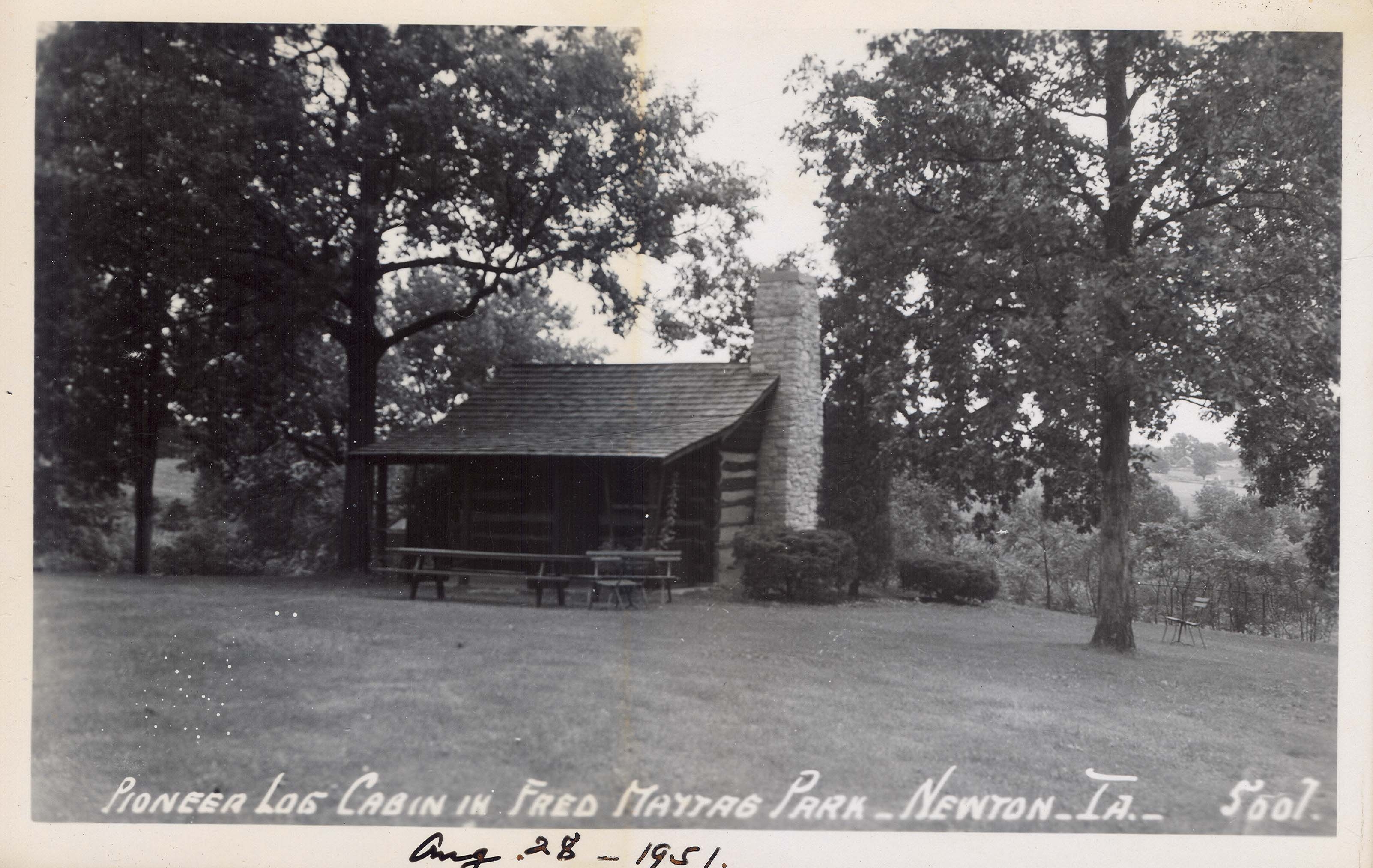Although the United States had purchased the Louisiana Territory from France in 1803, Iowa was still considered Indian Territory. Land-hungry settlers moved inexorably across the woodlands of Ohio and Indiana into the Illinois prairies up to the Mississippi River. The river was a hard boundary, remaining in the nominal possession of the Sauk and Fox Confederacy in the south, and the Lakota Sioux in the north. A series of treaties, with the first in 1804, began to dispossess the natives of their lands. Settlers, however, didn’t wait for the permission of the government to move into Indian Territory. They crossed the river, illegally claimed land, and “squatted” on the land. The U.S. established military posts along the Mississippi whose main occupation was to protect the Indians from the squatters and to send the squatters back across the river. However, the Blackhawk Purchase, concluded in 1832, broke the dam, allowing Americans to flow across the river into Iowa. They began establishing towns along the Iowa side of the river and claiming land within what was known as the Blackhawk Strip. Another treaty in 1837 opened another strip of land adjacent to the first, and thousands of settlers flowed in. The treaty of 1842 with the Sauk and Fox Confederacy ceded the rest of Iowa, but the Indians were given until April 30, 1843 to move west of the line established by the treaty. News of these new lands brought would-be settlers, champing at the bit to move in. On the night of April 30, a most unseemly land rush occurred in Iowa. Here’s an account from the Iowa History Project
“During the last week of April [1843] the eastern border of the New Purchase was lined with men, women and children. Forming the families of settlers, who were all ready to race for the best claims, and were but awaiting the word from the troops. April 30 there was great excitement. The fleetest horses were saddled and the swiftest runners selected, and everything was prepared in order to seize on the claims thought to be the richest.
All day the settlers heaped up piles of dry wood, and when night came lighted bonfires, which would serve to show the way. At midnight, precisely, signal guns were discharged by the dragoons. At once, with shouts and whoops and general uproar, the people rushed across the boundary. They carried torches, axes and hatchets, and used all manner of methods calculated to lay out claims with the utmost speed.
When day broke the ground far and near was covered with rude marks. Lines conflicted, and numerous disputes arose, usually to be amicable settled. When the government surveyor measured the lines bounding claims he found many needed revision.
Between midnight and daybreak a large portion of the eastern part of the New Purchase was settled.
Midnight of October 10, 1845, the Indians’ rights to the remainder of the New Purchase expired, and when the signal was given to the settlers, scenes similar to those of the spring of 1843 were enacted. The settlers who had been camping along the border thronged in.”
Owl Acres sits nearly on the line of demarcation at the far western edge of the land opened to settlers in 1843, and the land rush didn’t extend that far. In January, 1848, Thomas Reece was the first settler to stake a claim in what would become Palo Alto Township where Owl Acres sits today. The photo at the head of this post is of the first log cabin he built that year. The structure has been preserved in a park and is extant today. The land that includes Owl Acres was purchased from the Government by a settler named Jesse Reeves in 1854. He paid $1.25 per acre for 167 acres. In that year alone, the population of Iowa jumped from 325,000 to 500,000. Most of Palo Alto Township would be purchased and settled in 1854.
Another quote from the Iowa History Project gives a picture of the activity in 1854:
“In the papers of 1854 long accounts, full of exclamation points, are printed, telling of the vast crowds of people entering the State. The roads were thronged with teams, and the groves and woodlands and prairies were alive with figures, and white with tents and canvas topped wagons. Ferries over the Mississippi were busy day and night conveying the pioneers from Illinois to Iowa. Cabins were going up like magic.
Oskaloosa reports that at least a thousand persons pass through every week, bound westward. Three hundred buildings go up in a season at Davenport. Seven hundred immigrants a day travel over the Burlington highway. It is estimated that in thirty days 20,000 traverse the vicinity of Burlington. The boats on the Ohio and Mississippi are packed. Six hundred persons go through St. Louis by river a day. The trains that pull into Chicago with passengers for the Mississippi, are double headers. In six days twelve thousand passengers from the East arrive in Chicago, destined for Iowa and the West.”
Photo by Historic Iowa Postcard Collection, Special Collections and Archives, Grinnell College Libraries

1 comment
Incredible! Such a picture you paint with your words! Thank you!